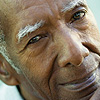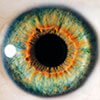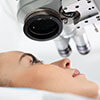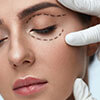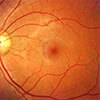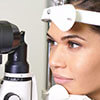Key Points
What your patient’s discussion with the surgeon entails:
The patients sent to NWES/WES for cataract surgery will meet our surgeon for a cataract evaluation and discuss the best way to approach surgical treatment and desired outcomes. In the past, this discussion was centered on different lens choices: monofocal, toric, Crystalens, Trulign, ReSTOR, Tecnis, among others. The discussion would also have involved the advantages and disadvantages of each lens, as well as costs. With the introduction of Vision Correction, we have modified our discussion to be less lens-focused and more patient expectation-focused.
The Vision Questionnaire
Each patient completes a Vision Questionnaire prior to the exam with our cataract surgeon. The surgeon uses this document to determine what a patient expects from cataract surgery. With friends, neighbors and family members that have had the procedure in the past, patients come in with pre-determined expectations for their cataract surgery. “I thought I would see well at all distances after cataract surgery. My friend never wears glasses after their cataract surgery,” is something that we hear frequently. We expect that co-managing doctors face these same challenges in their offices. The Vision Questionnaire helps our surgeons focus their discussion on desired outcomes, insurance coverage, and how the patient’s expectations might be met by using available technology.
Referring physician notes and recommendations
During the consultation, recommendations and notes of conversations or past experiences with patients are extremely helpful. We welcome pertinent information concerning the patient’s adaptability to previous monovision, progressive add lenses, or other individual preferences on the patient’s referral form to our office. Please be sure to comprehensively identify these recommendations to us; they are helpful and much appreciated. Our surgeons appreciate notes about whether a patient has been successful (or unsuccessful) with monovision or has visual expectations that have been managed successfully, and they consider this information in their recommendations to the patient.
Preoperative Measurements
Preoperative measurements for surgery are taken after the patient’s cataract consultation. For the most part, this process has remained the same. We have an additional intraoperative measurement available for Vision Correction 1 and 2 patients, Optiwave Refractive Analysis (ORA). This instrument is attached to the surgical microscope. ORA provides a live, aphakic, intraoperative measurement of refractive error to best determine the most accurate IOL power and alignment of axis, if implanting a toric IOL, for the desired outcome. This measurement is compared against pre-surgical calculations to determine the IOL that will deliver the best visual outcome to meet the patient’s expectations.
Communicating Expectations
In addition to determining patient expectations prior to cataract surgery, our surgeons and technicians talk with the patient about what to plan for after cataract surgery in terms of appointments, recovery period, and most importantly, long-term outcomes. While some patients wish to be less dependent on glasses after surgery, we also remind patients what they can expect to wear glasses for.
Conversely, many patients will continue to elect to have cataract surgery with no further vision correction. These patients are reminded before, sometimes at, and after surgery, what they can expect to wear glasses for: usually a light prescription for sharpening at distance and a custom reading prescription. We find it especially helpful to discuss glasses with the patient at the 1-day and 1-week follow-up after surgery.
Patients who elect Vision Correction 1, at either distance or near, should be reminded that our goal through surgery is to reduce their dependence on glasses for that one distance, but the converse focal length will require glasses.
Those who elect for Vision Correction 2 will have reduced dependence on glasses for two different focal lengths, but are reminded that they may need readers for fine, near tasks with Crystalens, and might need computer glasses for RESTOR and Tecnis multifocal lenses.


